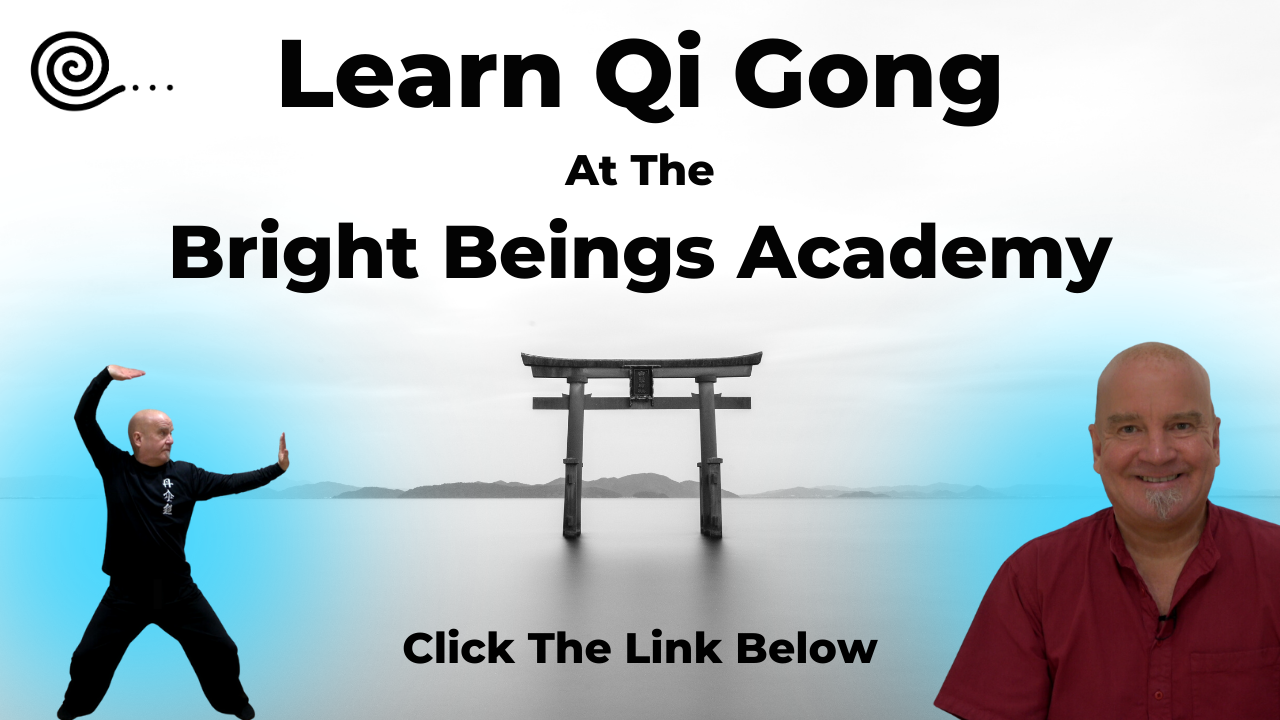
What's The Difference Between Tai Chi And Qi Gong?
The Difference Between Qi Gong And Tai Chi is small
Many people ask me what’s the difference between Qi Gong and Tai Chi? First, look at these questions. Have you ever wondered why a good mind body connection is so difficult to achieve? Why your mind keeps running off in all different directions at the slightest interruption? Why you can’t seem to sit there and be a human being, rather than a human doing? I’ve found ways to help all of these problems and more.
Most people have heard about Tai Chi, but what about Qi Gong? Qi Gong can be pronounced Chi Gong, which is the Chinese way. I am a Ki Gong instructor and learnt this the Korean way. Qi Gong actually came before Tai Chi and is a healing art rather than a martial art. Tai Chi is a martial art. All in all, Ki Gong is combining your mind, your body and your breath together.
"Qi Gong is a healing art that came before Tai Chi, which is a martial art."
What is Qi Gong?
Qi Gong is a healing art, whereas Tai Chi is a martial art. Qi Gong came first. Every Tai Chi movement can be considered a Qi Gong movement. Not every Qi Gong movement is a Tai Chi movement. Qi Gong has many aspects to the practise.
I teach this the Korean way, which is known as Ki Gong. Qi or Ki means energy. This is the life force energy that actually animates your body. Gong means utilising well, or can even be translated loosely as mastering. Qi Gong is about mastering the energies of the body. Qi Gong is also more adaptive.
With this practise, you learn to come back to your natural state very quickly. In today's stressed world, most people are walking around in a fight or flight condition.
This is terrible for you and your health. Qi Gong addresses this very quickly by training your body to come back into the rest and digest position. The more you practise, the more your body realises that it want to be in this state more. This become addictive also.
"Qi Gong is a healing art that helps your body return to a natural, restful state, addressing stress and promoting well-being."
Three Main Aspects To Qi Gong
There are three main aspects to the Ki Gong class I teach at the The Bright Beings Academy. And here are the three main aspects listed.
Action
This is a brisk movement that gets the energy flowing through the body quickly. This action also uses the mouth, making a noise. The mouth is the biggest acupressure point of the body. This is good for releasing stress and anxiety very quickly. And also good for improving circulation.
Calm Action
This comes in the form of slow, steady movements. The breath is coordinated with these movements. This is rather like Tai Chi but different. Tai Chi moves can be used in a Qi Gong class to practise this action of combining your mind, your breath and your body together. That is the essence of both Tai Chi and Qi Gong. But as mentioned earlier, we are more focusing on the healing element of the practise, not the martial art element. Form is not so important.
Calm
These are holding positions. Some of these positions are energy accumulation exercises where you are accumulating energy into your Dahn Jons. Your Dahn Jons are the energy centres of the body. The energy body is like the physical body, where we have certain areas of the body have energy functions. Much like the physical body has eyes to see and ears to hear etc… Our energy system has areas to express our emotions and feelings. And our power and passion. Also, our wisdom and insight. Holding the body still can be difficult at first, but your stamina soon builds up.
"The three main aspects of Qi Gong are action, calm action, and calm, each focusing on movement, breath, and energy flow for healing."
What Other Differences Are There Between A Qi Gong And Tai Chi Class?
Qi Gong Classes
Warm up sequence
Both classes should ideally have a warm-up sequence. These can differ from instructor to instructor. But the main reason for this is to get the energy flowing around the body. This is particularly important to connect with your energy in this way. It really helps you to connect with your body more deeply.
Stretching the meridians
In my Qi Gong class at the Bright Beings Academy, we stretch the meridians out every class. This is to ensure a good energy flow to the internal organs. And also to the extremities of the body. These are not always present in Tai Chi classes.
Easy routines
In my class, we practise easy routines. These are rather like Tai Chi routines, but different. The emphasis is always on healing and not the martial art aspect. Combining your mind, with your body and your breath was the fastest way I found to get into deep meditation.
Ji Gam meditation
Almost every class we include a Jo Gam meditation. This is an energy meditation so you can connect with the electro magnetic energy in and around your body. This can feel like a spongy ball, or a magnetic feeling. Or can even feel like there is a resistance of pulling feeling. When the students first connect with this, it is a paradigm changer.
"Qi Gong classes focus on warm-ups, stretching meridians, easy routines, and Ji Gam meditation to connect deeply with energy and promote healing."
Tai Chi Classes
More complex
Tai Chi classes are a little more complex than Qi Gong classes. It is mainly focused on form. There are classes that are much easier to follow. David Dorian Ross runs a great Academy, where he gets the flows going in a beautiful and easy to follow way. But the more traditional way of teaching Tai Chi can get very technical. That is why I prefer Qi Gong classes. I do not find them as frustrating because the forms are much easier to learn. But the challenge is still there because they are hard to master.
Less focused
Tai Chi classes can be looked upon as less focused. In a Qi Gong class, you can target specific areas of the body. For instance, if you want to target back issues, there are many moves in a Qi Gong class to do this. The dog wags his tail, swimming dragon or even water swings. Personally, I had back issues when I was younger and they have all disappeared since teaching these types of classes regularly.
"Tai Chi classes are more complex and focused on form, while Qi Gong classes offer easier-to-learn forms with targeted healing benefits."
What Is Good About Both Practises
Both practises are particularly good for soothing stress and anxiety. Also to alleviate depression, and eventually trauma. Blood pressure, heart conditions and many other ailments can be helped with both practises. Personally, I chose Qi Gong because it was easier for me to get into when I was really stressed, anxious and depressed. We ran an impact report with my Charity Brighter Living in my local area to study the effects of the Ki Gong classes on the residents of community centres.
How Old Are These Practises?
Qi Gong has been developing for over 5,000 years now. Tai Chi is a new kid on the block compared to this, being started around 800 years ago. As I stated earlier, Qi Gong came first. Both practises are very beneficial to you and your body. There are slight differences between the two. It is really down to personal preference which one you take up. Both of them are scientifically proven to be very good for you.
Frequently Asked Questions About Qi Gong And Tai Chi
What is the difference between Tai Chi and Qi Gong?
Tai Chi is a little more complex to learn. Qi Gong goes into areas of healing, Tai Chi does not. They come from the same family of exercises. They both are very beneficial for your health and well-being.
What is the difference between Qi, Chi and Ki?
All of these means the same thing. They are translated as life force energy or internal energy. This is the energy that animates the body. If a body has no Qi, Chi or Ki, it is a corpse.
What happens to your body when you practise Qi Gong?
You get a better sense of well-being. You feel more grounded and connected to yourself. Qi Gong may improve fitness, lower blood pressure and soothe anxiety and stress. It can relieve chronic pain, improve immune system function and respiratory system.
To Sum Up
Personally, I like both practises. I chose Qi Gong over Tai Chi, but l love them both. I use Tai Chi in some of the classes I teach at the Bright Beings Academy. And these classes vary every week. There are also on demand classes for you to use also.

Click Here To Start Your Membership
How Can I Learn Qi Gong?
You can search for an instructor near you if you can find one. Make sure you resonate with the instructor. This will ensure you will keep the practise up. Or you can join the Bright Beings Academy with a two weeks trial period to see if the style I teach resonates with you. Click the link below to join now.
Click The Link Below To Visit The Bright Beings Academy.

Learn Qi Gong at the Bright Beings Academy - Click Here
I look forward to connecting with you again soon.
Until then, be well and keep shining.
Peter. :)
Categories and website home
Website - Qi Gong - Meditation - HSP - Spirituality - Sound Healing
